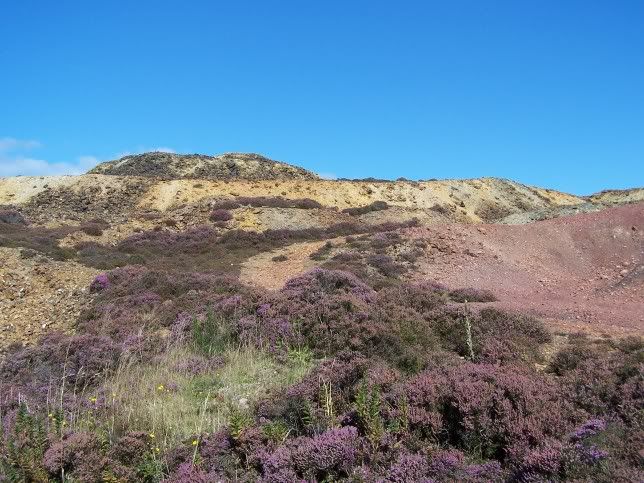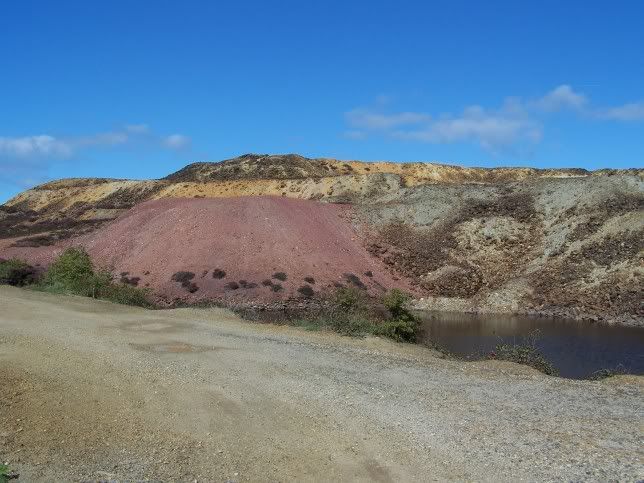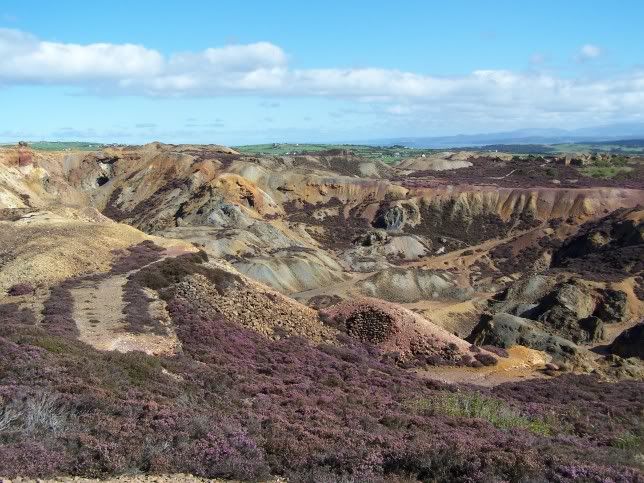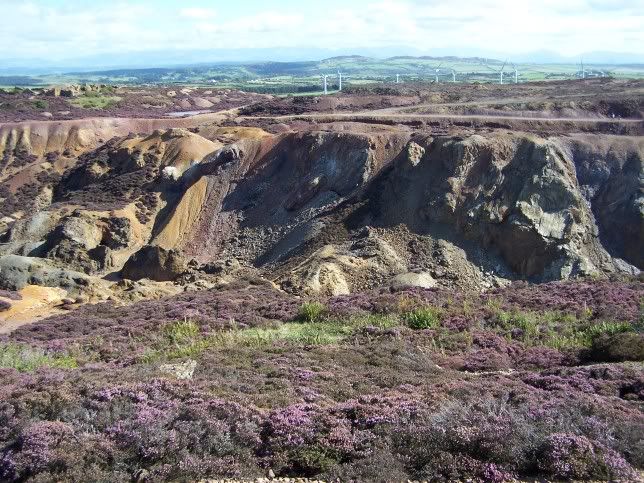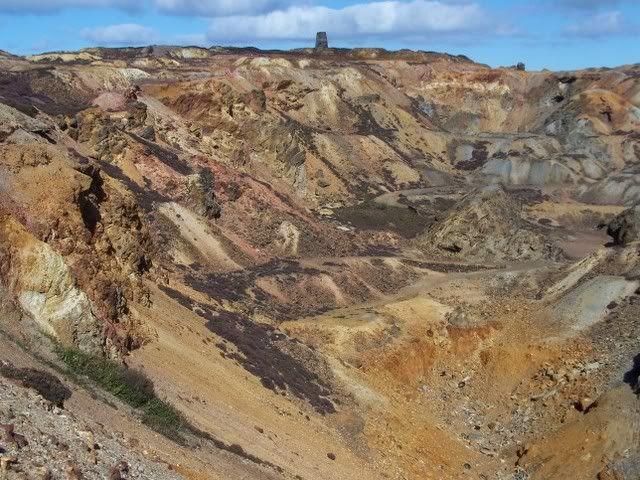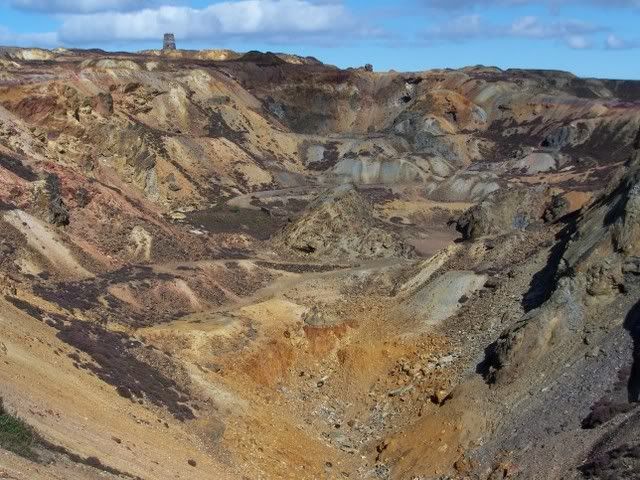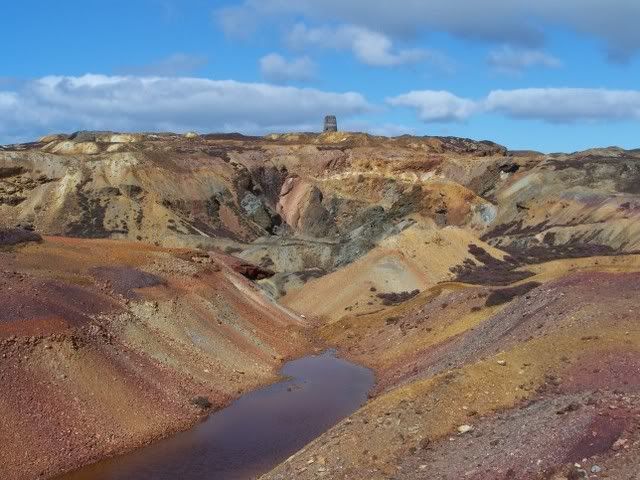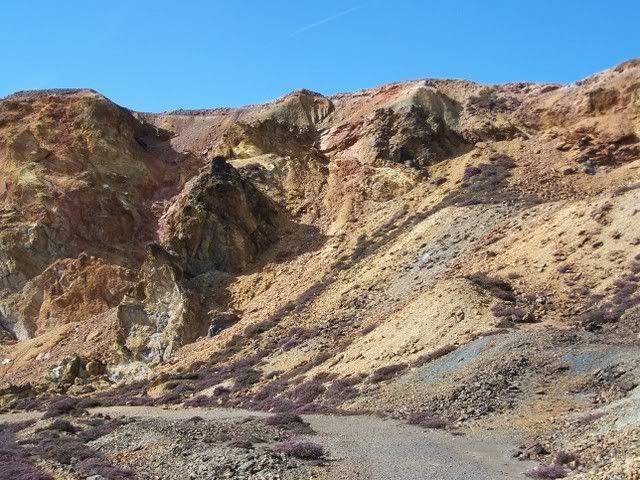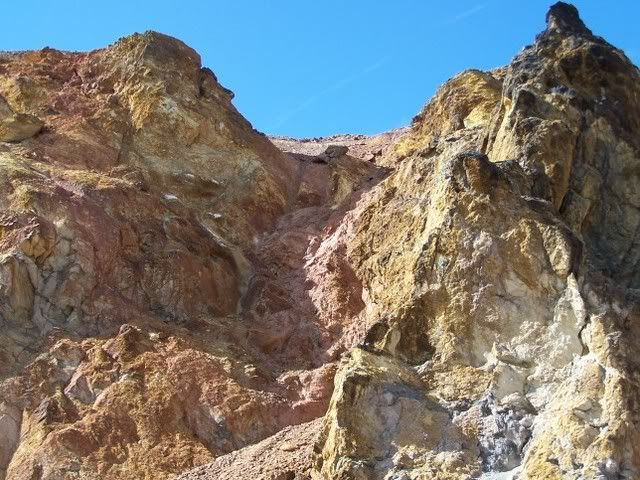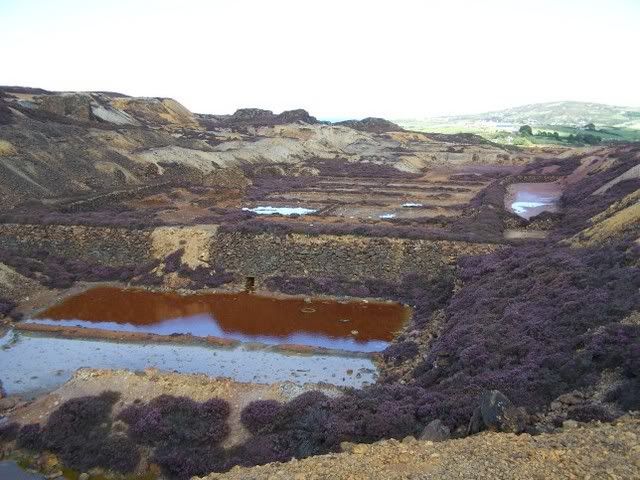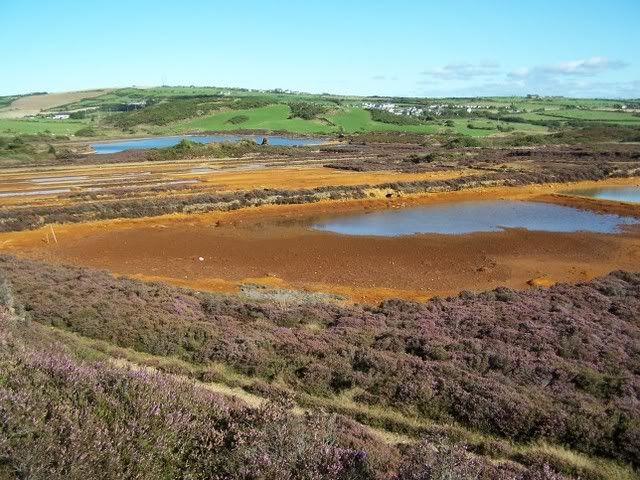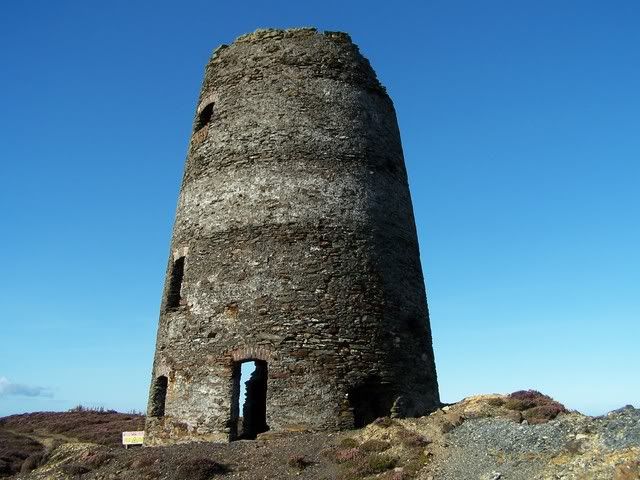Parys Mountain
A Brief History Of The Mines
It was not until the mid-eighteenth century that the first major ore deposit of the modern industrial era was discovered.
At this time the mountain was divided between two owners leading to the development of adjoining mines,
the Mona Mine to the East and Parys Mine to the West.
The copper from these two mines dominated the word's markets in the 1780's and forced the Cornish mines to close.
It was used to sheath the admiralty's ships of war, in order to prevent the growth of seaweed and barnacles and to
prevent boring by worms. This increased their manouvreability and made possible Nelson's victories.
The post-war slump and diminishing accessible ore reserves, together with competition from cheaper ores from abroad,
led to the decline of the mines and to the end of deep mining in the 1880's.
The ore was initially worked on the surface from shallow shafts and then by open-pit mining (Opencasts) and later
underground from adits and from shafts up to 300m deep. The ore was broken into small lumps by hand, the best ore
being transported by ship from Amlwch Port to Lancashire or South Wales for smelting. Copper was concentrated and
extracted from the remainder using kilns and furnaces on site and at Amlwch Port itself. It was also discovered that
purer metal could be obtained efficiently, although in small amounts, by its precipitation from drainage water with scrap
iron in purpose-built ponds. Associated with the mines, other important chemical industries were established on the
mountain based on by-products, such as ochre pigments, sulphur, vitriol and alum.
The eighteenth century miners recognised that they were following in the steps of much earlier workers, an observation that
was linked to the discovery locally of copper ingots bearing Roman inscriptions. Recently, excavations have enabled
surface debris to be dated to nearly four thousand years ago, (the early Bronse Age), and access has also been regained
to the sealed underground workings of Parys mine revealing evidence for this ancient mining. Parys Mountain is thus an
addition to the very few sites in Britain, such as the Great Orme, where there is evidence for the prehistoric beginnings
of our British metal mining industry. It is therefore internationally important both as a historic mine and as an
archaeological site.
The industrial history of Parys Mountain is complemented by that of Amlwch Port, 4km to the north.
This compact but important inlet developed with the mines in the late 18th century to become a major North Wales port,
ship-building, smelting and chemical industry centre. From hence the ore from the mines was shipped out to Swansea or
Lancashire, and coal and scrap iron imported. At this time Amlwch itself was the second largest population centre in Wales
after Carmarthen.
The port's fortunes declined whith those of the mines and it is now a fascinating relic of bygone industry, well worth visiting.
Water in the mine is very acidic (sulphuric acid - ph 2) and meant that pumps had to be made from oak, not iron.
It's orange-brown colour is due to the very high concentrations of iron (ferric - in solution) leached from oxidising
sulphide minerals, as indeed do the range of yellows, reds and purples in the spoil. This dramatic scene has been used
in numerous films from 'Dr Who' to, most recently, 'Mortal Kombat 2'.
